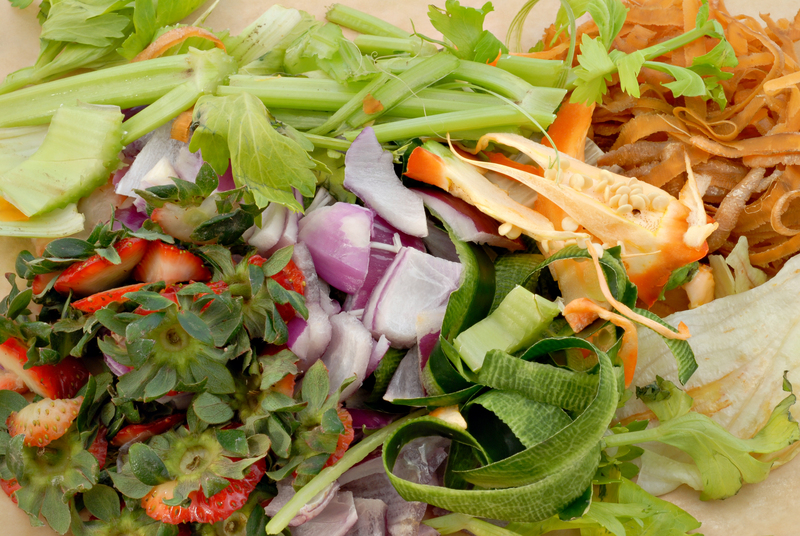Turning the Tide on Microplastic Pollution Today
Microplastic pollution has rapidly emerged as one of the most critical environmental threats of our time. Once an obscure issue, today the spread of microplastics through water, soil, air, and even food has sparked concern among scientists, governments, and the general public worldwide. As these tiny plastic particles infiltrate virtually every corner of our planet, the time has come to take decisive action. This comprehensive guide explores the sources, consequences, and, most importantly, solutions for turning the tide on microplastic pollution today.
What Are Microplastics?
Microplastics are defined as plastic particles measuring less than 5 millimeters in diameter. Though tiny, their impact is enormous. These particles originate from two main sources:
- Primary microplastics: Manufactured at a microscopic size, such as microbeads used in personal care products, industrial abrasives, or pre-production pellets (nurdles).
- Secondary microplastics: Result from the breakdown of larger plastic debris through photodegradation, weathering, or mechanical processes. Everyday objects like plastic bags, bottles, and synthetic textiles shed countless particles as they degrade.
Invisible Yet Ubiquitous
Despite their small size, microplastic particles have become omnipresent. From Arctic ice cores and remote mountains to the deepest parts of the ocean, scientists have detected microplastics in even the most isolated environments. Remarkably, microplastics also turn up in our tap water, table salt, seafood, and even in the air we breathe.

The Global Scope of Microplastic Pollution
Microplastic pollution is not confined by borders. According to research, an estimated 11 million metric tons of plastics enter the oceans every year, a significant portion breaking into microplastics over time. Land and freshwater systems experience a similar fate, as wastewater run-off, stormwater, and agricultural runoff all act as conduits for microplastic distribution.
Major Sources of Microplastics
To tackle microplastic pollution effectively, it's essential to identify its principal sources. These include:
- Personal care products: Exfoliants, toothpastes, and cleansers containing microbeads.
- Textile fibers: Synthetic clothing (like polyester and nylon) shed microfibers during washing.
- Car tyres: Abrasion from road use releases microplastics into the air and waterway runoff.
- Plastic waste: Breakdown of packaging, bottles, fishing gear, and other consumer plastics.
- Industrial processes: Pellet spills, sandblasting operations, and more.
The Journey of a Microplastic
Once released, microplastics travel astonishing distances:
- Waterways act as transporters: Rivers carry microplastics to oceans, distributing them globally.
- Wind dispersal: Lightweight microplastics become airborne, settling far from their origins.
- Food chain infiltration: Microplastics consumed by small organisms move up the food web toward humans.
The Environmental and Health Impact
Marine Life at Risk
Arguably, the most visible impact of microplastic pollution is in aquatic ecosystems:
- Blockages and starvation: Marine animals mistake microplastics for food, leading to digestive blockages, reduced feeding, and sometimes death.
- Bioaccumulation: Microplastics and associated toxins accumulate in organisms and magnify up the food chain.
- Ecosystem disruption: Ingestion affects growth, reproduction, and overall population stability, threatening biodiversity.
Human Health Concerns
Microplastics in food and water raise increasing health alarms:
- Physical harm: Sharp fragments may damage the digestive tract.
- Chemical exposure: Microplastics absorb environmental toxins and leach additives like phthalates and bisphenol A, both potential endocrine disruptors.
- Unknown long-term effects: Inhalation and ingestion could have unforeseen consequences, as scientific research continues to explore these risks.
Cutting-edge Research and Detection Technologies
Innovative Detection Methods
Efforts aimed at curbing microplastic pollution depend on accurate detection. Modern technologies include:
- Raman spectroscopy: Characterizes the chemical composition of microplastic samples.
- Fourier-transform infrared (FTIR) spectroscopy: Identifies specific plastic polymers.
- Automated imaging and AI: Speeds up quantification and characterization of microplastic particles.
Improved detection enables better monitoring, impactful policy, and trackable progress in reducing microplastic threats.
Taking Action: Solutions to Reduce Microplastic Pollution
Turning the tide on microplastic pollution requires a multi-faceted approach, spanning legislation, technological innovation, and changes in individual behavior. Here's how stakeholders are making a difference:
1. Stronger Policy and Legislation
- Bans on microbeads: Many countries, including the US, UK, and Canada, have outlawed microplastics in cosmetics and personal care products.
- Extended Producer Responsibility (EPR): Regulations that hold manufacturers accountable for the end-of-life impacts of their plastic products.
- Global Plastic Treaties: Ongoing UN negotiations aspire to a legally binding global agreement on plastic pollution reduction.
2. Innovation in Waste Management
- Advanced filtration: Upgrades to wastewater treatment plants capture more microfibers and microplastic particles.
- Washing machine filters: Simple add-ons can trap synthetic fibers before they enter waterways.
- Better stormwater management: Infrastructure improvements reduce run-off contamination.
3. Sustainable Product Design
- Biodegradable alternatives: Replacing conventional plastics with compostable or eco-friendly substitutes.
- Redesigning textiles: Developing fabrics that shed fewer fibers, or utilizing non-plastic materials.
- Label transparency: Empowering consumers to choose products free from microplastics or harmful additives.
4. Corporate Responsibility and Industry Leadership
- Reducing packaging: Brands minimize or reimagine plastic packaging to prevent secondary microplastics.
- Responsible source management: Tracking and addressing microplastic leaks across the supply chain.
- Supporting recovery initiatives: Sponsoring programs to collect and recycle ocean-bound plastics.
5. Scientific Research and Community Monitoring
- Crowdsourced data collection: Citizen science initiatives enable large-scale monitoring of local pollution.
- Ocean cleanup projects: Innovative systems target plastic debris before it fragments further.
- Interdisciplinary research: Collaboration yields a deeper understanding of exposure pathways and long-term impacts.
How Individuals Can Help Curb Microplastic Pollution
While governments, scientists, and corporations play a pivotal role, every person can also help reduce microplastic contamination. Here are some effective steps:
- Refuse single-use plastics: Carry reusable bags, bottles, coffee cups, and cutlery.
- Choose natural fibers: Select cotton, wool, or hemp instead of polyester, nylon, or acrylic when buying clothes.
- Use microplastic-catching devices: Employ laundry bags or filters that trap synthetic fibers.
- Avoid products with microbeads: Read labels and opt for microplastic-free cosmetics and personal care items.
- Advocate and educate: Raise awareness in your community; participate in cleanups and support NGOs focused on plastic pollution solutions.
- Dispose of waste responsibly and recycle plastics properly to prevent litter entering the environment.
Small Changes, Big Impact
It would be easy to feel overwhelmed by the ubiquity and scale of plastic pollution. However, by adopting mindful consumption habits and supporting systemic change, each of us can be part of the solution. Remember, turning the tide on microplastic pollution takes both individual commitment and collective action.

Global Success Stories: Turning the Tide Around the World
Countries, cities, and organizations worldwide are setting inspiring examples as they work to reverse the tide of microplastic pollution. Just a few notable initiatives include:
- European Union: The EU has enforced strict bans on microbeads and is pioneering legislation for plastic reduction and recycling targets.
- Japan: Advanced wastewater treatments and educational campaigns are leading to significant reductions in microplastics entering rivers and oceans.
- India: Robust anti-plastic campaigns have led to bans on single-use plastics in several regions, bolstered by grassroots clean-up drives.
- Corporations: Companies like Adidas and Patagonia innovate with recycled ocean plastics and low-shedding textiles, helping to reduce future microfiber pollution.
The Future: Next Steps in Ending Microplastic Pollution
There is no single "silver bullet" solution, but the combined efforts of policy makers, businesses, scientists, and everyday people are beginning to make a real difference. The future holds promise thanks to:
- Growing consumer demand for cleaner alternatives, pressuring industry to adapt and innovate.
- Global agreements and coordinated policy actions, raising standards and harmonizing efforts.
- Ongoing scientific breakthroughs, unlocking new methods for detection, monitoring, and clean-up.
- Rising public awareness, steering society toward sustainable choices and civic engagement.
Conclusion: Hope in Action
Turning the tide on microplastic pollution is a defining challenge of our era, but it is also an opportunity for positive transformation. Through informed choices, innovative policy, and unified action, we can create cleaner oceans, healthier wildlife, and a safer world for future generations. We all have a part to play--let's seize the moment to change the course of microplastic pollution today, and leave a legacy of stewardship and sustainability for tomorrow.